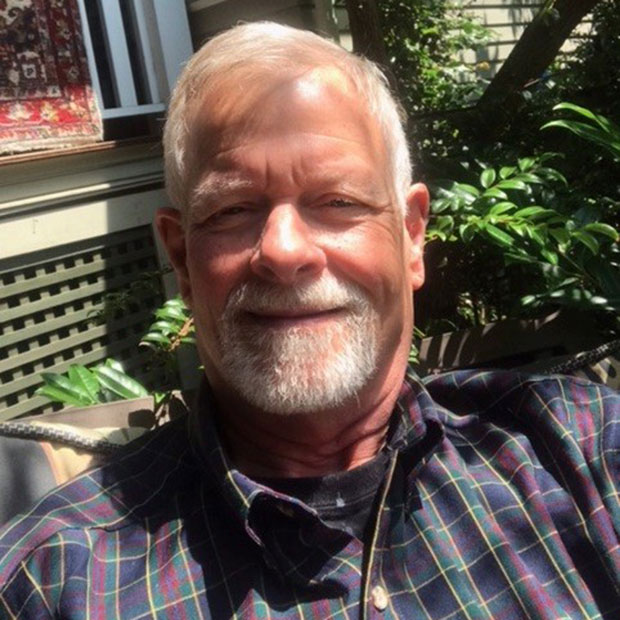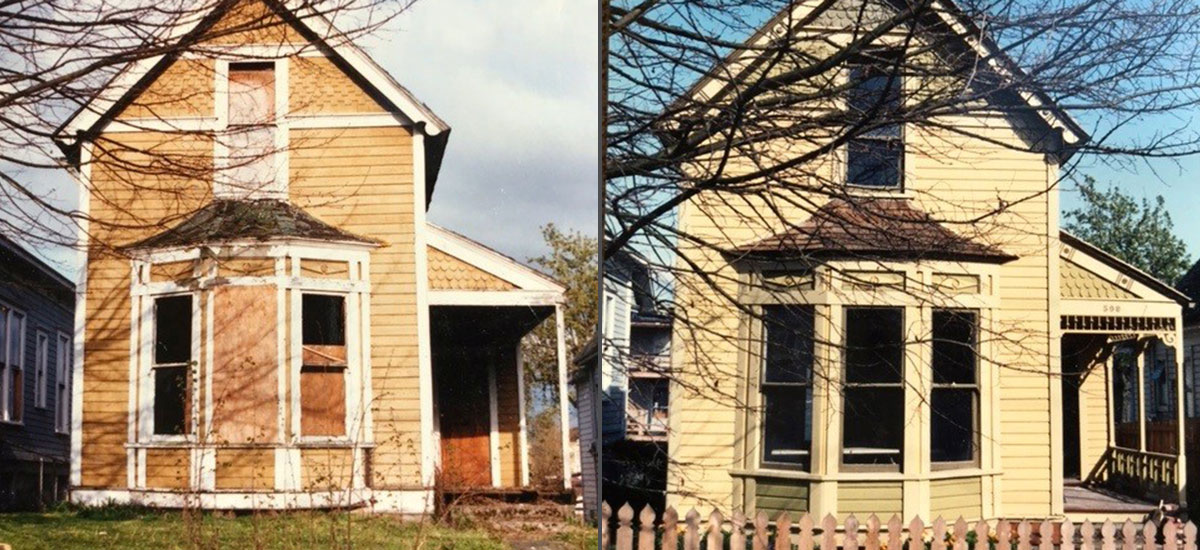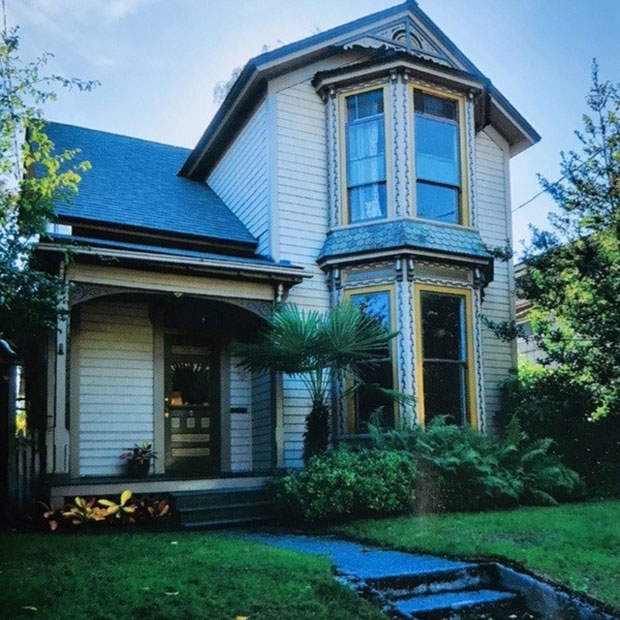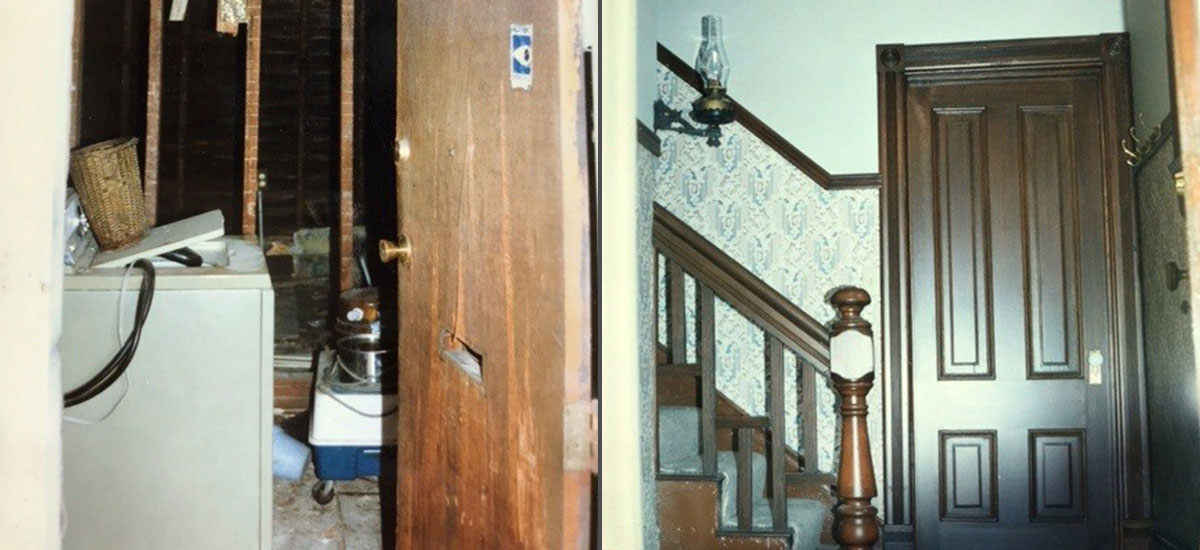Rehabilitating homes becomes unexpected career for 1977 alumnus
October 16, 2025 — Apart from four years at Grinnell College, Greg Ahmann ’77 has spent most of his life in Washington state.
“I remember well my first blast of heat and humidity when I came to Iowa in August of 1973,” he says. “There was little air conditioning on campus and certainly not in the dorms. I survived with a six-dollar fan from Ben Franklin and frequent cold showers.”
 Greg Ahmann ’77
Greg Ahmann ’77
Ahmann attended Lakeside, a college prep school in Seattle, that he says prided themselves on exposing students to a wide variety of colleges. He honed in on Grinnell because it had high academic standards, was far enough without being too far from home, had no Greek life, the flexibility of an open curriculum, and a national student body.
“Grinnell’s location meant there weren’t a lot of distractions that big cities or nearby ski slopes and surfing beaches might have offered,” Ahmann says. “And the school had a good entertainment budget for things to do right on campus. I’m a plodder and have to keep up with my homework, so this environment worked for me.”
However, there was a unique distraction that soon drew Ahmann in. A resident of James Hall, he was dismayed by the shabbiness of the hallways, particularly the doors that had peeling layers of streaked and scratched paint. “The South Campus dorms had high-quality solid oak woodwork that had originally been stained dark and varnished,” he explains.
Upon further scrutiny, Ahmann realized that a beige water-based latex coat had been painted over battleship grey World War II surplus oil-based paint. “I knew enough about painting to understand that this causes peeling,” he says. “I also figured that the B&G [Buildings and Grounds] budget wouldn’t be put toward this, so I decided to do it myself.”
Ahmann removed his door each day to do the work, despite initial warnings from hallmates that he’d get in trouble. But the opposite happened. After several weeks of stripping, sanding then refinishing his door, its frame and transom using the floor’s kitchenette as his workspace, he learned that his efforts had inspired the College to provide the necessary materials for others to refinish their doors.
 A before and after photo shows Ahmann’s exterior rehabilitation work on a Seattle house orginally built in 1894.
A before and after photo shows Ahmann’s exterior rehabilitation work on a Seattle house orginally built in 1894.
“Sadly, the small history preservation ripple I started, never turned into a movement,” Ahmann, a history major, says. “I am aware of only one other guy who finished refinishing his own door.”
After Grinnell, Ahmann went back to his home state, attending law school in Tacoma. He then spent five years as the deputy prosecuting attorney for Snohomish County. But his love of old buildings – along with his interest in history – ultimately had a stronger pull.
With money Ahmann came into from a small inheritance, he left his job and invested in a derelict house in which he saw potential, taking on the challenge of rehabilitating it. Two years later, he sold it for more than four times the purchase price.
 Ahmann bought this Seattle house
Ahmann bought this Seattle house
in 1985 as a fixer-upper.
“I had to buy my own materials and cover my living expenses, but I still made more than I had as a prosecutor,” he says. He also made enough to invest in another home and started the rehabilitation process again.
“Each time I did this, real estate values were going up,” Ahmann explains. “So I would make a little more. I wasn’t very fast at rehabbing houses, but I got lucky that the market was going in the right direction.”
Ahmann acknowledges that most of his remodeling skills are self-taught. He would talk to people working at hardware stores and read books, but mainly, Ahmann learned from hands-on experience. He had roofed and painted houses as a summer job when he was a teenager.
“My first paying job was re-roofing a shed in cedar shingles for my grandfather when I was 9 years old for the then-minimum-wage of $1.60 per hour,” he remembers.
He also credits his older brother who has done home renovation though not for resale. “He knew more about electrical work than I did, but once you learn that along with plumbing, how to sweat pipes and do dry wall finishing, you have the basics.”
Ahmann has an affinity for Victorian homes, which are harder to come by in Seattle because it’s a relatively new city. “Iowa is actually far more interesting architecturally to me,” he admits. “I’ve always thought it would be a fascinating place to fix up old homes. But I’m not from there, I’m from here. I want to find ways to get people to appreciate the old architecture that is still around.”
While his home renovations have been featured in two different HGTV shows, what Ahmann is most proud of is when he moved a Victorian house onto eight acres of wooded land his grandfather had acquired at a tax sale. After calling several companies, he found one willing to do the daunting seven-mile move.
 A before and after look at an entry way to a house Ahmann says looked old fashioned but is very functional in a modern way.
A before and after look at an entry way to a house Ahmann says looked old fashioned but is very functional in a modern way.
They had to cut the house into three pieces removing the second floor so it could fit under electric, phone, and cable wires while setting up detours for the middle-of-the-night operation. The kitchen was offset from the main body of the house, so it was cut off too, to narrow the parts so they would fit onto the public streets and highways. Each piece was moved on a different night.
“Once the pieces were stacked back together, I had to reattach the frame, have a new foundation built, replace all of the plumbing, wiring, and much of the walls,” he explains. “This was a deluxe rehabilitation.”
In 2010, after weathering much of the housing recession, Ahmann decided to stop rehabbing houses to sell. So, he made his last project his permanent home. “I still continue to work on it because it’s big enough that there’s always something to do.” Semi-retired, he manages a few vintage rental houses and a mid-century commercial building.
“Most people see a rundown house and don’t have the imagination I do,” he says. “I have a keen ability to see its potential and then I liberate it from the clutter and decay.”
—by Melanie Drake ’92